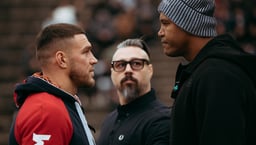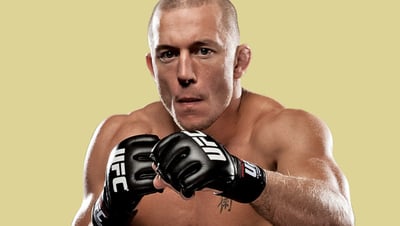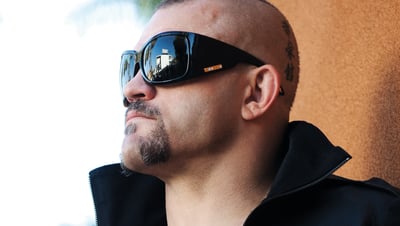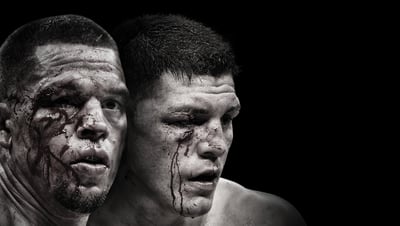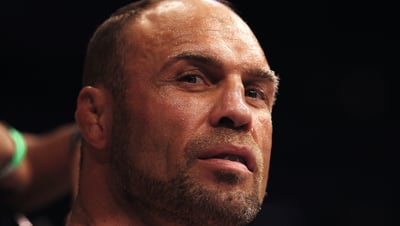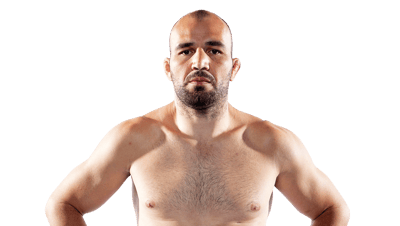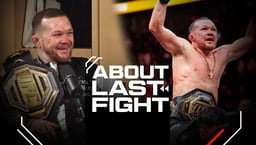
Issue 213
January 2025
Izzy Carnwath chronicles the birth and evolution of international amateur MMA, uncovering the unsung heroes who shaped the sport into what it is today and how it might end up in the Olympics
Landing in Vegas for the first time in 2014, enveloped in a billow of desert heat, I got in a taxi to the UNLV campus’ Thomas & Mack Center, home to historic fight cards, including UFC 43. I was there to assist an event that almost didn’t happen: the inaugural International Amateur World Championships, organized by the International Mixed Martial Arts Federation (IMMAF).
Before then, no universal, international amateur rules were set for MMA. The rules back then had been coopted from Sweden, where IMMAF founders had won the mandate to regulate the sport to save it from a ban. These were refined by referee Marc Goddard, who was recruited by UFC President of Regulatory Affairs Marc Ratner as chair. Legendary in MMA’s history, Ratner had organized the original professional rules into state law as UFC fighting evolved from novelty entertainment into a sport.
A NEW PLAYBOOK
Goddard recalls what it was like, “A unified amateur rule set was something that was just not in existence since, in different parts of the world, MMA was fought and administered in completely different ways.”
UFC saw the value in developing an amateur league as a governed pathway to becoming a pro. The concept had precedent, with the Olympics still requiring boxers to be amateur in 2014.
“Our closest relative is boxing,” echoes Goddard. “And there you have an instantly recognizable distinction between professional and amateur. Pathways were something that MMA was missing as a young sport.”
The most critical function of the ruleset was to permit the tournament format, whereby athletes can safely compete in consecutive bouts, day after day, by removing MMA’s riskier techniques.
“For me, it was all about education and longevity,” explains Goddard. “Getting youngsters to stay amateur and get as much experience as they could, like in judo, boxing, wrestling, where youngsters have amateur careers into literally hundreds of bouts.”
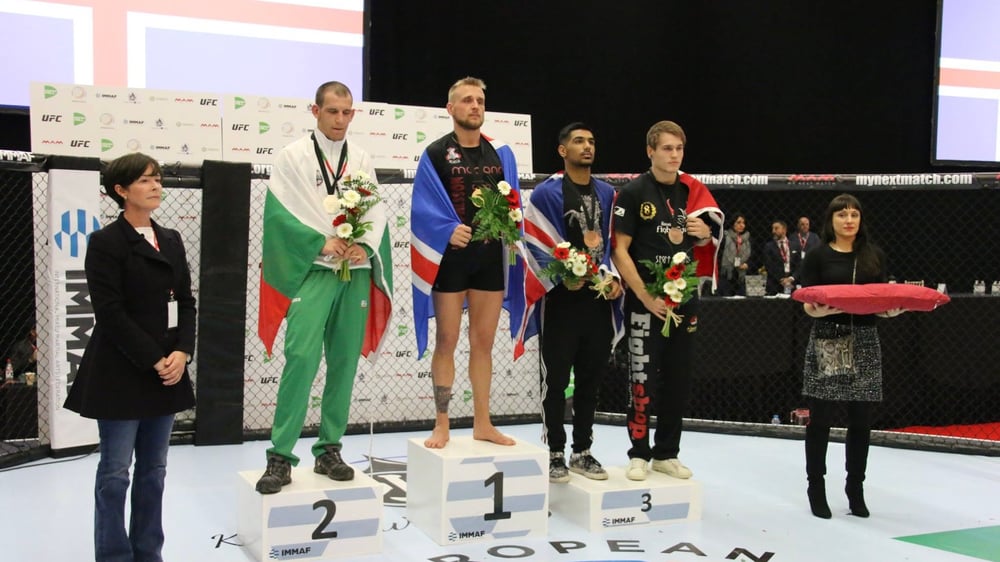
FIGHTING RECORDS
Arriving at the event, I walked into a technical glitch that dominated the next 48 hours and almost halted the competition. This was thanks to a juxtaposition with state law because we’d flown in athletes from 23 countries to compete in a globally unregulated sport. Athletes approved as amateurs by their national associations didn’t meet the eligibility requirements of the Nevada State Athletic Commission. Any fighter who had fought in a bout that used pro techniques or against an opponent considered pro by the commission could not legally compete. The issue was thanks to a lack of an internationally governed database for MMA competitors. Private sites like Sherdog, Tapology, and mixedmartialarts.com evolved into the go-to record-keeping sites. The site, mixedmartialarts.com, had been awarded the mandate by Nevada as the official reference point. Speaking to site founder Kirik Jenness, he said the site was initially created to keep pace with the sport’s rapid growth.
“I co-owned a martial arts studio, and when UFC 1 debuted in 1993, we all gathered at a friend’s condo to watch it,” says Jenness. “Astonished at Royce (Gracie)’s performance, the next day, we bought Rorion Gracie’s instructional tapes and then opened a separate program for this new sport. I took voluminous notes on Rorion’s tapes and a later set by Renzo Gracie and Craig Kukuk. Then, I got a Mac computer with video functionality and started supplementing my notes with screen-captured images. At some point, I realized that I was likely not the only devotee of the sport with information-retention issues and that a booklet supplementing the videos might be a good add-on.”
By 1998, Jenness was ready to release a book.
“The question was marketing,” he explains. “I knew other fans existed. How on earth could I find anyone who might want to buy it? The internet was new, so I grabbed some URLs. I grabbed submissionfighting.com and mixedmartialarts.com. Then, in 2008, there was an RFP (Request for Proposal) from the Association of Boxing Commissions for an MMA records keeper. The records-keeping effort spun off a rankings system, and we now also maintain the official rankings for the UFC and Bellator MMA.”
SPINNING THE RECORDS
Worldwide record-keeping was, and remains, ad hoc and voluntary. The trouble is that athletes’ records are sometimes missing bouts, or they have no idea how their fights came to be recorded there. While amateur status traditionally referred to how an athlete may or may not earn income, the differences in amateur rules categorization globally caused chaos as teams arrived at the event that day.
“Oh my God, it was nuts, right?” recalls Jeff Meyer, promotor of Tuff-N-Uff and the 2014 event. “We were trying to vet hundreds of athletes overnight because all of the fighter registrations weren’t finally complete until the fighters arrived, and we were verifying their IDs. Thank goodness we devised a plan to divvy it between everybody, and we split up a bunch, so this person's doing A to F, and so on. We just started verifying frantically all night against all the databases we could find out there in the entire world.”
I stayed up all night with General Secretary Erika Mattsson at the Excalibur Casino, in our suits with laptops propped on slot machines - the only place we could get Wi-Fi. We scoured through records, news reports, and YouTube videos, looking for anything that might be evidence of an athlete having pro experience. Was that a legal elbow strike or a foul? Regional MMA blogsites saved in the day as the only independent providers of accounts for several bouts.
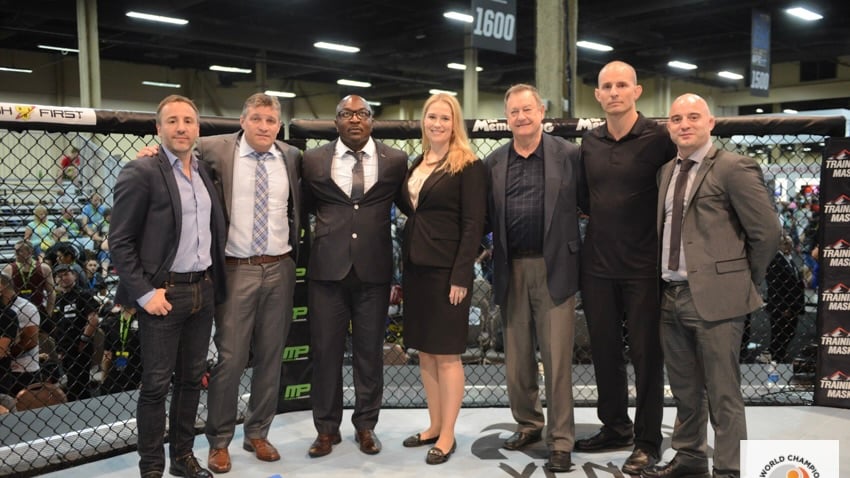
TENTATIVE HOOKS
By the time Marc Ratner secured a meeting with Nevada State Athletic Commission Executive Director Bob Bennett to clear the event, it had already started, and we were heading toward the end of the first competition day. On behalf of IMMAF, I was armed with an Excel sheet detailing all the athletes we could prove to be amateur, along with video evidence, promoter’s letters, and testimonies surfaced and sourced by an assigned task force. Not everyone passed. Several Ukrainians were tragically pulled from the tournament after their first bouts. In the following weeks, I was hired by IMMAF and helped to establish the organization’s original amateur eligibility criteria. The pro-am distinction was heavily contested, notably by Eastern European countries that referred to state-sponsored amateurs as more likely to enjoy full-time training than pros who might take the occasional cash purse. We complied with the US model and aligned with boxing to establish an original international pro/am definition to be adopted by thirty-five member countries and form the vetting criteria for participation in future international amateur championships. IMMAF developed a solid, recognizable, and aspirational platform from this first stake in the ground. When the organization was to merge later in 2018 with Russian-born rival WMMAA, the pro/am distinction was carried forward, rolled out, and codified across more countries.
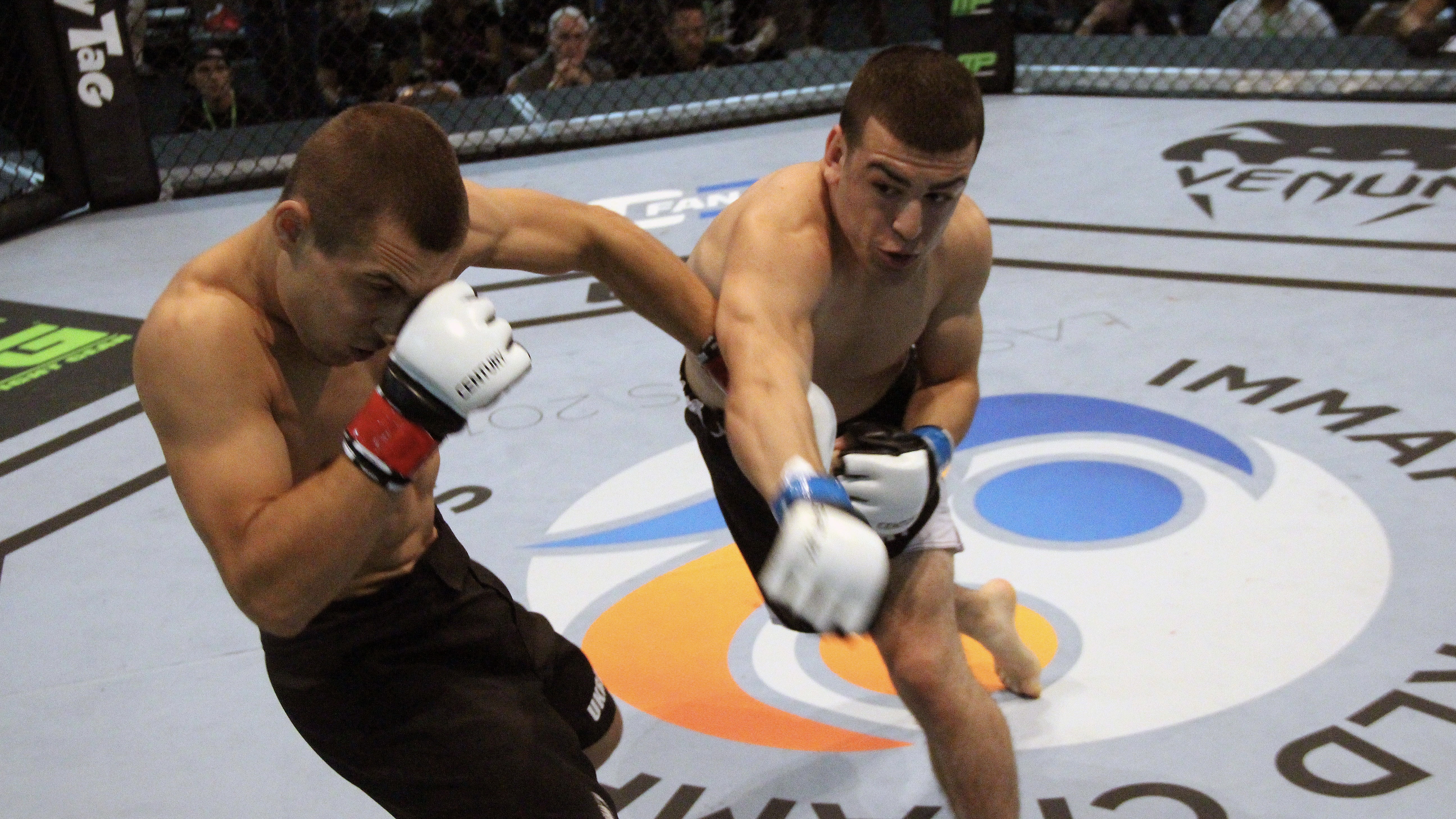
THE EVOLUTION
In 2019, a new international governing body for amateur MMA emerged: the Global Association of Mixed Martial Arts (GAMMA), an offshoot of the IMMAF - WMMAA. In a short time, GAMMA has made waves for MMA to be recognized by the Olympics, securing inclusion last year for MMA in the African Games. GAMMA is aligned with other Olympic sports in that it does not exclude professional athletes. I now work with GAMMA, with whom the question of amateur tournament eligibility has been raised around athlete safety. There is based on a concern about opponent mismatches, where a distinction is made between professional matchmakers who arrange well-balanced matches with safety in mind and unscrupulous promoters who prioritize profits and easy knockouts. However, GAMMA President Alexander Engelhardt says a fighter’s pro/am status might not be the best way to assess a competitor’s skill level and ensure safety.
“I don’t believe that excluding professionals makes the sport safer since athletes can acquire significant amateur experience across other martial arts, such as sambo, pankration, Thai boxing, wrestling, grappling, and so on,” he says. “Someone who has had 200 amateur sambo bouts is certainly not at a disadvantage against a pro-MMA athlete, based on their experience alone. Nor does a pro record account for the quality of matches or experience since the promoter-led approach encourages athletes and managers to agree with opponents who are most likely to protect their win record. Indeed, there have been many times under GAMMA when the athlete with the pro-MMA record has lost to the amateur, or the competitor with the leaner record, due to their broader, not always recorded, martial arts experience.”
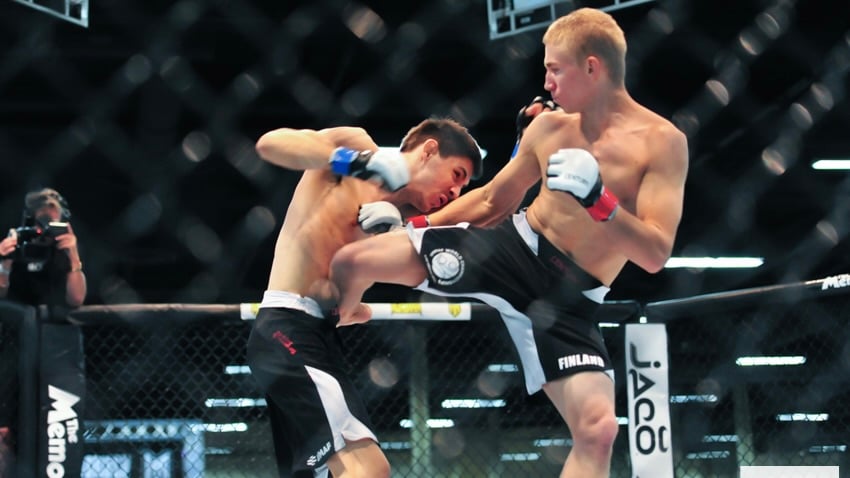
A LEARNING CURVE
Engelhardt sees pro/am definitions as a US tradition, which he says is geared towards the pro end of the sport under the commissions. This differs from the Olympic tradition in other countries, where the Olympic amateur platform is the baseline. In this space, the classist roots of amateur sports in Europe are worth mentioning because they evolved as a gentlemanly pursuit to exclude those who have to work. For Olympic founder Baron Pierre De Coubertin, amateurism was rooted in classical ideals about self-improvement, an attitude he admired in British boarding schools as the pillar on which its empire was built. He wanted his Olympic games to spread that ideal.
“GAMMA's amateur rule sets provide the first line of safety, excluding high-risk pro techniques in alignment with other Olympic combat sports,” Engelhardt says when asked about safety. “There is no evidence to suggest MMA is less safe than these.”
GAMMA USA President and International Technical Delegate Justin Brown expands on this viewpoint.
“Aside from the match rules, it is the responsibility of the national federations to select their teams for international level championships appropriately, he says. “Then, there is the seeding of GAMMA-ranked athletes during the draw. In accordance with the rules, referees are trained to stop bouts earlier if there emerges a difference in competency whereby one athlete is not able to effectively able to defend themselves prior to an ordinary technical knock-out situation.”
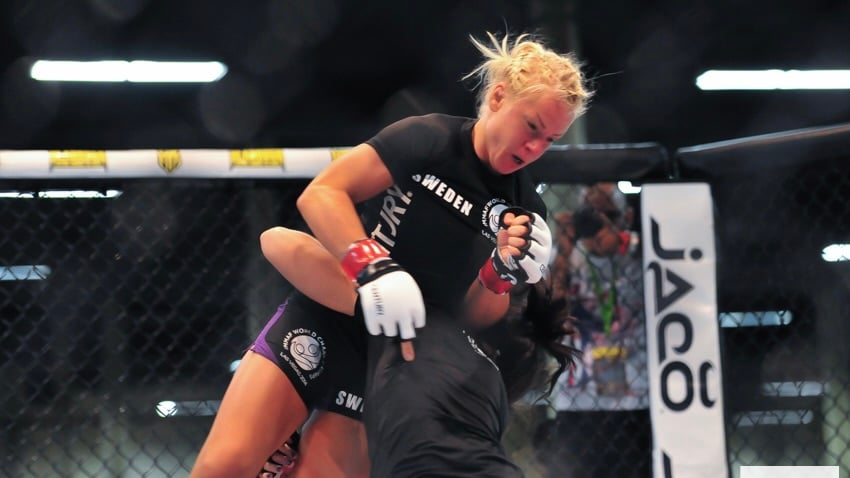
A NEW LIE OF THE LAND
Similar rules exist under IMMAF, which has always emphasized competitor safety. To this end, Goddard believes pros should be able to compete in amateur rules competitions by viewing the amateur leagues as a pathway to being a pro.
“Separation between the leagues is a necessity,” he says. “We all know the horror stories of youngsters who are not ready to compete under professional rules and are thrown in at the deep end. But amateur is a way of getting these kids as much experience as possible.”
If they have made the jump too early, according to Goddard, they should be able to return to amateur competition to continue to build their experience.
“It is well known that some Eastern bloc countries pay people to train full-time in the run-up to (amateur) events, says amateur movement founder August Wallen. “Then they can go home and can get rewarded $10,000 for a gold medal, whereas Swedish or English fighters don’t get paid for their fight camps. The result is that you can effectively have a professional of a high level with national state support. Look at IFMA (Thai boxing). You’ll see a true amateur with 18 fights facing, effectively a pro with 130 fights. Again, in MMA, state-sponsored amateur athletes from Belarus, Russia, Bahrain, and so on can come in with 150 fights. Skill, experience, and national support make a bigger difference to safety than thickness of gloves, for example.”
He says that in an amateur context, you’ll see the more experienced competitor adapt to do enough to win but with a gentleman’s rule not to inflict unnecessary harm. However, he states unequivocally that this in no way detracts from the requirement of the regulations to protect. Wallen agrees with Goddard that amateurs provide a solid developmental league, citing Swedish amateur world gold medalist Hanna Palmquist, who recently made her pro debut in ONE Championship last year. Under GAMMA, she can return to the international amateur circuit.
“Such a system allows inexperienced pros to mature with a parallel amateur career, and for women who struggle to secure more than one or two fights a year due to a smaller pool, this makes a huge difference.”
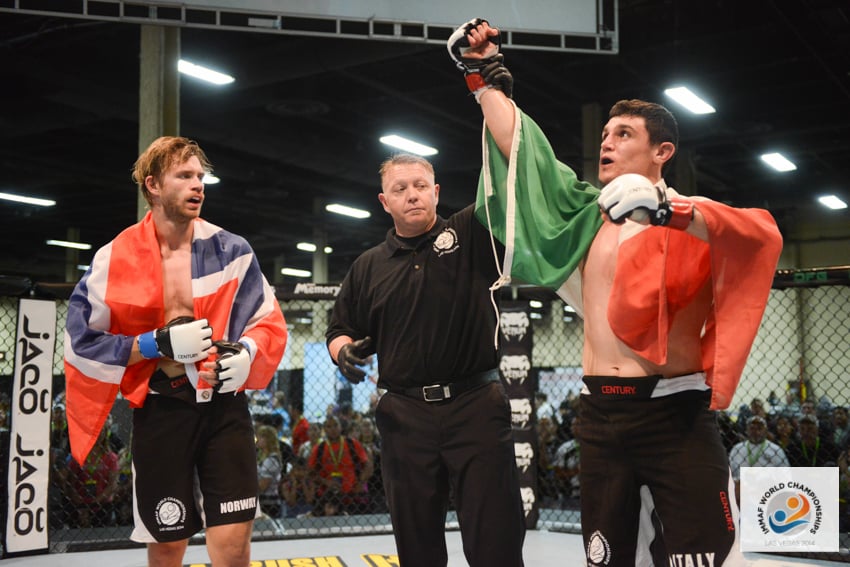
THE OLYMPIC PATHWAY
If MMA makes the Olympic Games, the amateur platform must be redefined.
“The financial incentive will be game-changing,” says August. “MMA athletes dream of going to UFC, ONE, and PFL, whereas most top Olympic boxers never transition. There is only one world champion in amateur boxing, which is very appealing. In the long run, there may be more and more who never step to pro.”
So, if MMA becomes an Olympic sport, athletes may choose the amateur route over the professional or perhaps be able to move between the two. Notably, PFL has featured amateurs on its undercards who can continue to compete on the amateur circuit. To what extent do promoters and managers see a promotional value in releasing talent for international medals and Olympic opportunities, and at what career level will it be considered a financial risk? Perhaps the market will decide. Or maybe boxing gives the best indicator. Regardless, it remains the musing of MMA journalists when predicting the future of the sport in the Olympic Games and how UFC main carders may fare in an Olympic tournament. Ultimately, the function of international amateurs in the MMA market will shift with time, which will also affect its development.
As August puts it, “We will know in retrospect.”
In the meantime, the topic remains rich with discourse within international associations of young sports. Either way, the amateur tournament format will continue to raise the skill level and deepen MMA’s global talent pool. From my first dash through the desert heat to working on the world stage shaped by visionaries, the evolution of amateur MMA stands as a legacy of grit, ingenuity, and the unyielding drive to elevate the sport to the world’s biggest stages.


